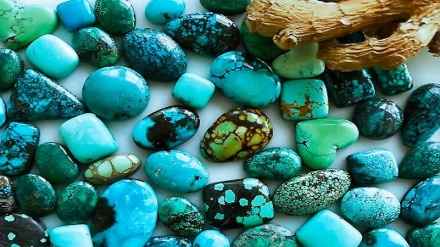Iranian Market (23)
Hello dear listeners of IRIB English Radio and welcome to another episode of the Iranian Market. In this edition of our weekly program, we are going to discuss Iran’s livestock industry.
As you know protein is one of the essential nutrients for human body. This substance is found in different sources including the meat of animals. Livestock industry is one of the subdivisions of agriculture sector which provides the protein needed for human body. This industry, due to its important role in the nutrition and health of individual and society as well as in job-creation and its added value, is taken into consideration by governments around the world. Red meat is one of the products of livestock industry which is of high importance because of its protein and other nutritional advantages.
The red meat obtained from livestock is full of useful vitamins including the B group vitamins. Red meat also contains protein, iron and phosphorus which prevents anemia and strengthens the teeth.
Red meat also contains vitamin B12, which helps make DNA and keeps nerve and red blood cells healthy. The zinc in red meat keeps proper functioning of the immune system. Red meat provides protein, which helps build bones and muscles.
Eating red meat is necessary for growth and strengthening of immune system. Researchers believe that using protein-rich foods accelerates the growth of bones in teenagers. They say children who don’t eat red meat, feel tired most of the time and are indifferent toward their environment. These group of people are not able enough to concentrate and are often depressed. They are also exposed to contraction of diseases more easily.
Meanwhile, doctors suggest a moderate use of red meat, because excessive use of this product exposes us to heart diseases and cancer.
Sheep is a type of livestock which is rich in red meat. It is estimated that there are over one billion sheep with more than 200 different breeds in the world. Economically, most of these breeds have little value. More than three fourth of the world livestock industry in the sector of sheep farming depends on less than 20 known breeds of sheep. Sheep is a type of livestock which tolerates different climates and needs less money for breeding in comparison with other domesticated animals.
Sheep are raised principally for their meat, milk and wool. They also yield sheepskin and parchment.
One of the other valuable products obtained from sheep is their intestines. Iran is the fifth exporter of sheep intestines in the world. Annually, Iran exports sheep intestines worth nearly100 million dollars to Germany, Italy, Russia, India, Turkey and Pakistan. The major use of this product is for packaging food products including sausages. This protein product is also used for making cosmetics as well as stitch threads.
In the field of non- oil exports, Iran exports living sheep to different countries around the world. Iran ranks eighth in the field of exporting living sheep and goat in the world.
In Iran, there are around 70 million sheep and goats with different breeds. One of Iran’s best breeds of sheep is Afshari. This breed is raised in many regions of Iran. Another famous breed of Iranian sheep is Zel.
Zel is the only breed of sheep which has tail instead of fat-tail. This small sheep has an average body weighing 40-45 kg. The coat of Zel sheep can appear in different colors from white to black or brown. The sheep is resistant to the humid and wet environment and parasites. This valuable breed lives mostly in the southern part of the Caspian Sea which enjoys high rainfall and is covered with forests. It is believed that this breed is the ancestor of Merino sheep.
One of the features of this breed is that it isn’t fatty and so has the best quality meat in the world. Among the other Iranian sheep breeds mention can be made of Baluchi, Bahmani, Taleshi, Qashqaie, Zandi, Shaal, Shahroudi, Bakhtiari, Qezel, Naeeni, Makouie, and Moghaani.
More than 20 breeds of goat have been recognized in Iran. Similar to sheep, goats are kept for producing different products including, meat, milk, fiber, hide, etc.
The typical breeds of goat include Saheli, Baluchi, Yazdi, Raeni, Marghoz and Mamasani.
Marghoz goats produce quite fine Mohair with different colors such as white, golden, brown, gray and even black. This fiber type is expensive and mainly exported. Marghoz goats are fertile animals with twin kidding over 30%.
Raeni goats are also famous for producing a fine Cashmere wool. The average body weight of this breed of goat is between 30-35 kg. Raeni goats are also important for their ability to survive in the arid sub-tropical environments in dry provinces such as Kerman and Yazd.
Dairy farming is one of the sectors of Iran’s animal husbandry. Today there are more than 26 thousand industrial cattle and dairy farms in Iran. From the eight million cows in Iran, about one million are kept in industrial units.
The record of establishment of modern dairy farms in Iran dates back to more than 50 years ago. After the victory of Islamic Revolution, the pace of the growth in this field reached its peak. It was during these years that Iran flourished in the field of producing dairy products.
Iran exports about one million tons of dairy products to about thirty countries including its neighbors Iraq, Afghanistan, Pakistan and Turkey.
AE/RM/SS


